//
Build & launch a foam rocket
Date: 11/03/2023
CONSTRUCT A ROCKET MADE FROM PIPE INSULATING FORM
Continuing the NASA at Home initiative, lets learn how NASA investigates the trajectory relationship between launch angle and range in a controlled investigation.

MATERIALS YOU WILL NEED:
 30 cm-long piece of polyethylene foam pipe insulation (for 1/2” size interior diameter)
30 cm-long piece of polyethylene foam pipe insulation (for 1/2” size interior diameter)- Fat rubber band (size 64)
- Styrofoam food tray, cardboard, or a stiff poster board
- Three 8 inch plastic cable wraps
- Duct tape
- Scissors
- Meter stick
- String 75 cm
Constructing the Foam Rocket
 1. To get started, measure out about a 30 centimeter length and then just give it a cut.
1. To get started, measure out about a 30 centimeter length and then just give it a cut.
 2. You'll notice there is a pre-scored cut along one edge. It runs the full length of the pipe insulation. Cut along that about eight centimeters. Make three additional cuts at a spacing of 90 degrees around the circumference. You'll end up with a nice flared bottom of your rocket.
2. You'll notice there is a pre-scored cut along one edge. It runs the full length of the pipe insulation. Cut along that about eight centimeters. Make three additional cuts at a spacing of 90 degrees around the circumference. You'll end up with a nice flared bottom of your rocket.
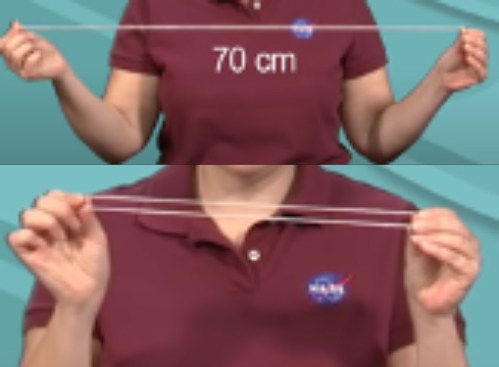 3. Take a piece of string about 70 centimeters in length, and you're going to tie a loop. Give it a really good yank because this is going to be a crucial part ofthe operations of the rocket.
3. Take a piece of string about 70 centimeters in length, and you're going to tie a loop. Give it a really good yank because this is going to be a crucial part ofthe operations of the rocket.
 4. Attach the string to your rubber band. Take one of your zip ties and run it between them and zip it up tight, and then trim off the extra area. The zip tie here is going to keep the insides of the rocket from pulling out.
4. Attach the string to your rubber band. Take one of your zip ties and run it between them and zip it up tight, and then trim off the extra area. The zip tie here is going to keep the insides of the rocket from pulling out.
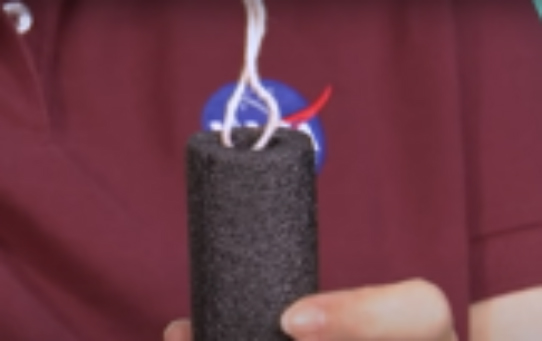 5. Drop the string from the top down toward the flared end. Now remember that zip tie is inside the rocket.
5. Drop the string from the top down toward the flared end. Now remember that zip tie is inside the rocket.
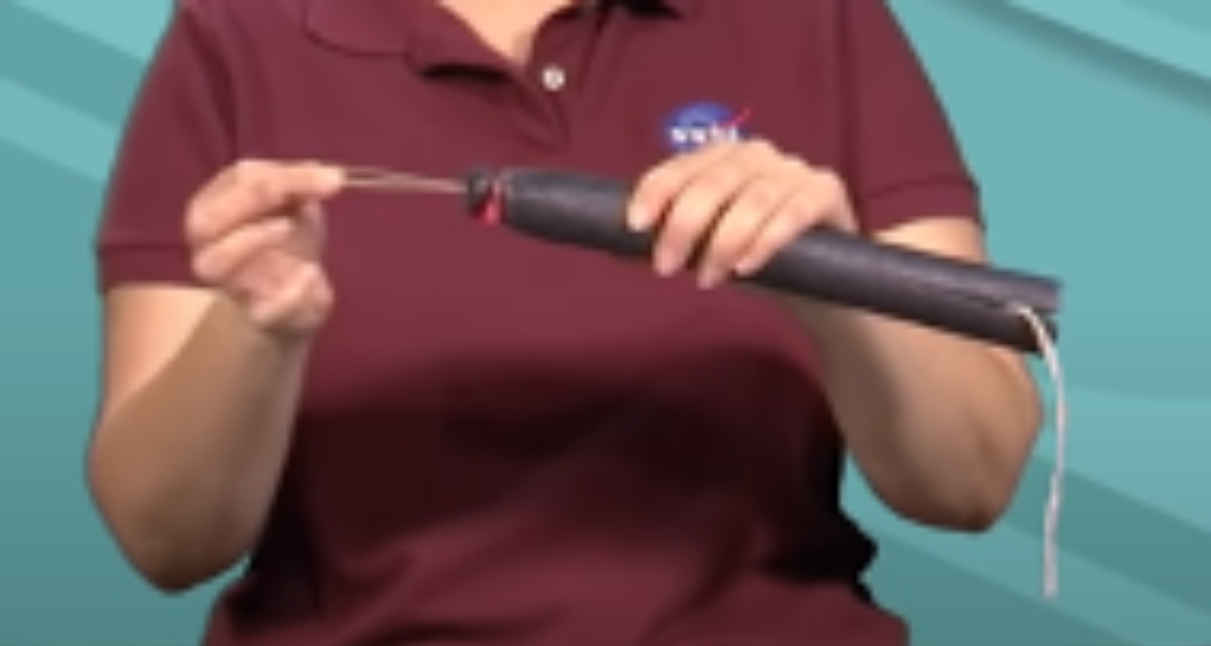 6. Now attach a zip tie to the nose of the rocket in front of the other zip tie. Wrap it around the nose. Before you tighten it all the way down, make sure that you have pulled the string down a good way so that the rubber band is barely sticking out, ensuring the zip tie that you used before is in. Trim off the extra are. The reason you want this ridiculously tight is so that this rubber band will not pull out.
6. Now attach a zip tie to the nose of the rocket in front of the other zip tie. Wrap it around the nose. Before you tighten it all the way down, make sure that you have pulled the string down a good way so that the rubber band is barely sticking out, ensuring the zip tie that you used before is in. Trim off the extra are. The reason you want this ridiculously tight is so that this rubber band will not pull out.
 7. Now it's time to work on our fins. The easiest way is to start with a square. You'll need to figure out what size fits your rocket best. My square is about 9 and a half centimeters on a side. Cut it diagonal. You'll then end up with two triangles. And those two triangles should be congruent. Those triangles are going to become four fins. Cut a partial altitude of the triangle. Remember the altitude is the distance from the apex to the base. First draw in the altitude half way up on one triangle and half way down on the other triangle. Then cut along those lines. Nest the two triangles together. You want them to be good and flushed on the bottom.
7. Now it's time to work on our fins. The easiest way is to start with a square. You'll need to figure out what size fits your rocket best. My square is about 9 and a half centimeters on a side. Cut it diagonal. You'll then end up with two triangles. And those two triangles should be congruent. Those triangles are going to become four fins. Cut a partial altitude of the triangle. Remember the altitude is the distance from the apex to the base. First draw in the altitude half way up on one triangle and half way down on the other triangle. Then cut along those lines. Nest the two triangles together. You want them to be good and flushed on the bottom.

 8. Remember, the flared end we pre-cut? We're going to set our string to the side and insert the rocket fins up into the rocket, making sure that you're pulling the string clearly down beside the fins and not getting it caught on any of the foam insulation.
8. Remember, the flared end we pre-cut? We're going to set our string to the side and insert the rocket fins up into the rocket, making sure that you're pulling the string clearly down beside the fins and not getting it caught on any of the foam insulation.
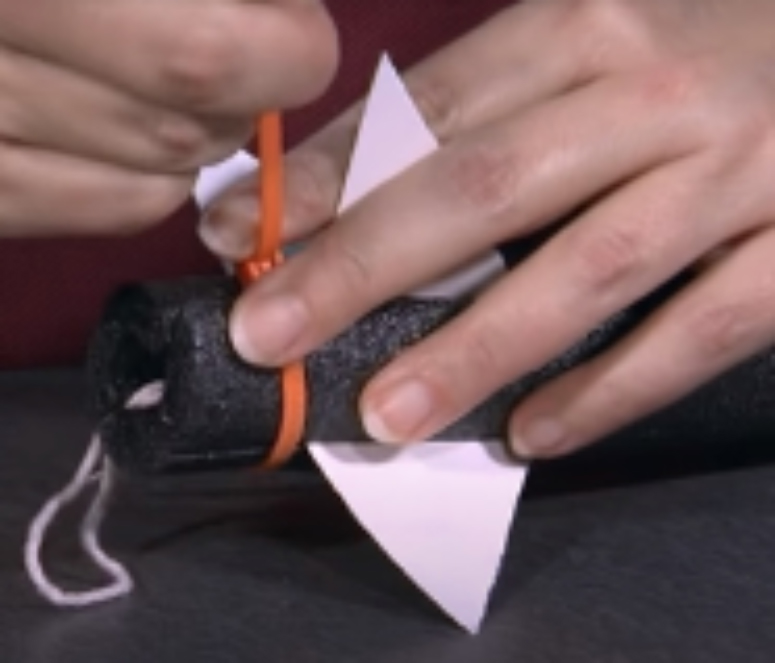 9. And then, you're going to need your third and final zip tie to zip that end of the rocket closed. Wrap it around and go very, very tight. The nose has to be supertight, the tail can be pretty tight. Trim off your excess. And there you have a final finished rocket.
9. And then, you're going to need your third and final zip tie to zip that end of the rocket closed. Wrap it around and go very, very tight. The nose has to be supertight, the tail can be pretty tight. Trim off your excess. And there you have a final finished rocket. 
Making the Launcher
Click here to download and print the quadrant pattern on card stock paper.
Cut out the pattern and fold it on the dashed line.
Tape the quadrant to the meter stick so that the black dot lies directly over the 60cm mark on the stick.
Press a push tack into the black dot.
Tie a string to the push tack and hang a small weight, such as a nut or a washer, on the string. The weight should swing freely.
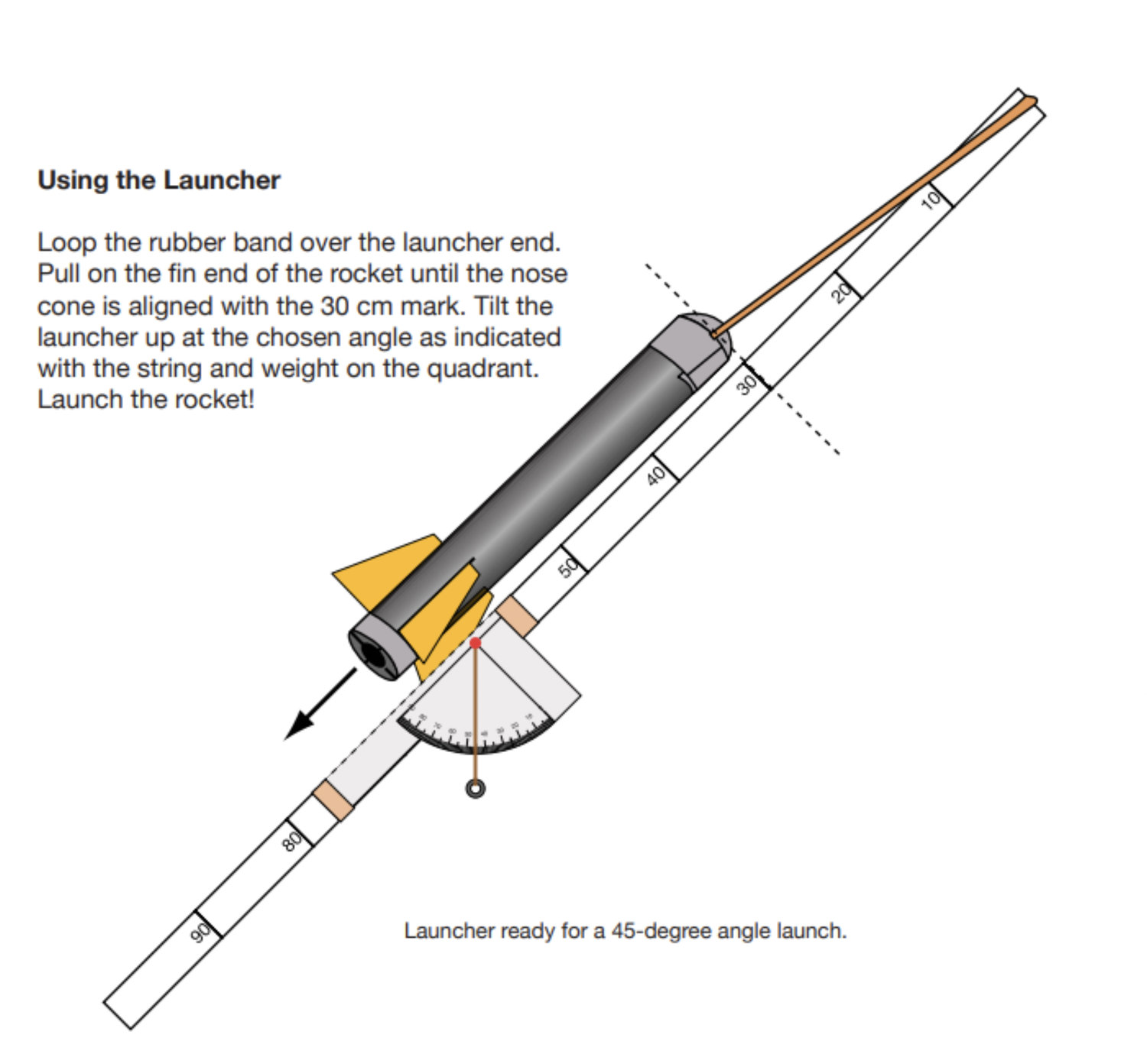
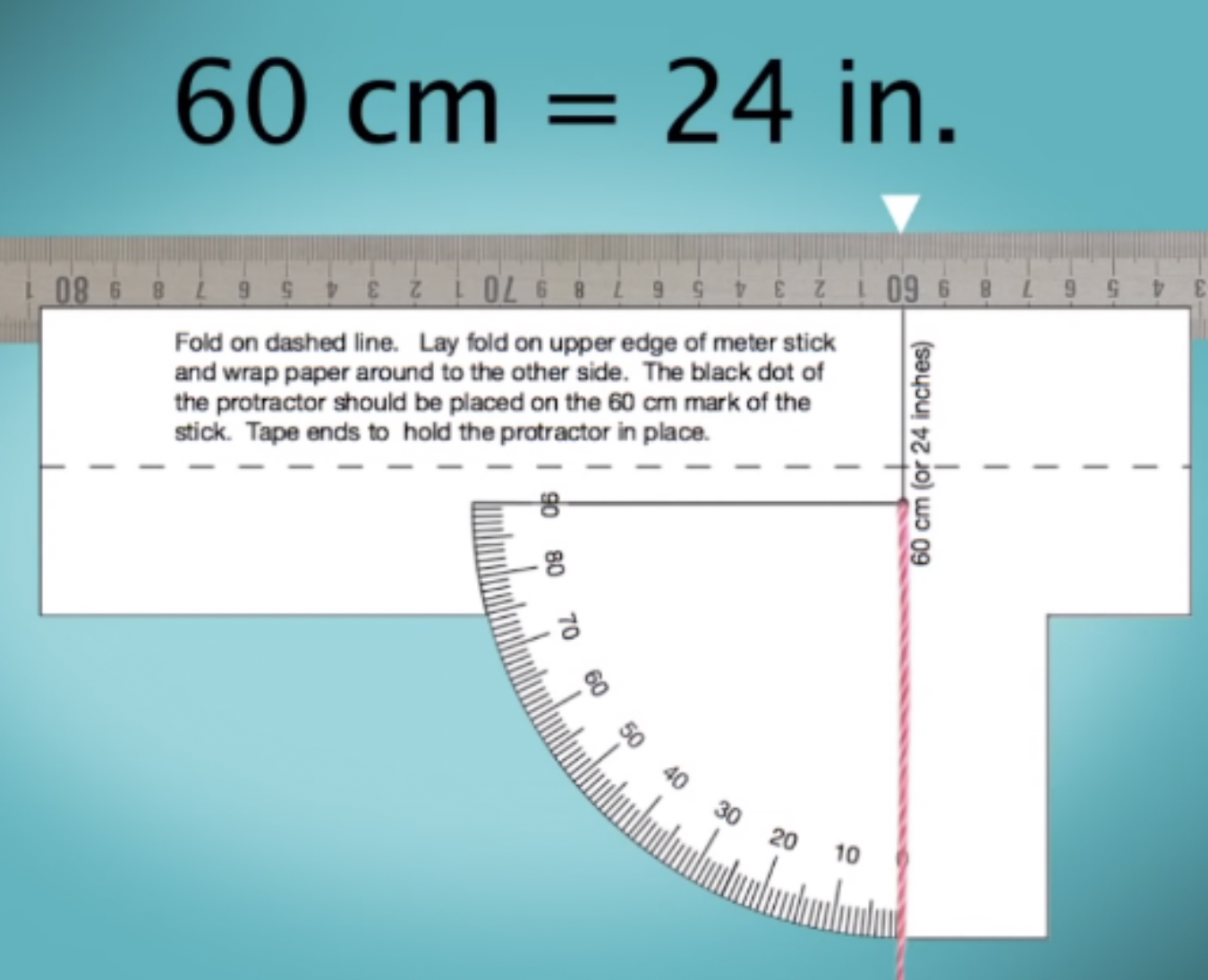
Loop the rubber band over the launcher end. Pull on the fin end of the rocket, until the nose cone is aligned with the 30 cm mark. Tilt the launcher up at the chosen angle as indicated with the strong and weight on the quadrant. Launch the rocket!
Go ahead and give it a go.
Once done upload your pictures or videos on your social networks.
Don’t forget to tag us @EduVoyage #EduVoyage #NasaAtHome
Visit NASA at Home to update yourself with the latest and greatest information of our universe in this quarantine season.
EduVoyage, a specialised division of ITL World -Travel Management Company, caters to the intricate requirements of student enrichment travel takes students to such facilities in countries including USA, Russia, Belgium, Kazakhstan, Singapore and Turkey.
Check out our space camp experiences.
Recent Stories
- Popular destinations for history field trips
- Consider doing these when you return from your school / field trip
- Build & launch a foam rocket
- Make a Hovercraft at Home
- A fun Nasa at Home Activity
Categories
- Expo 2020 Dubai
- Space Camps
- Volunteering & Conservation Programs
- Nature & Wildlife
- Multicultural Exchange Programs
- Archaeological Visits
- Historical Sites
- Sports Camps
- Innovation Tours
- Adventure Trips
- Industrial Visits
- Architecture Tours
- Music, Arts & Performance Tours
- Media & Film Tours
- Generic
- Educational Travel
Sign up to hear from us
Copyright © 2024 by EduVoyage